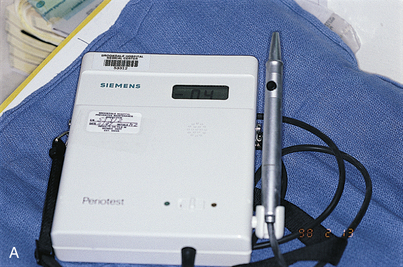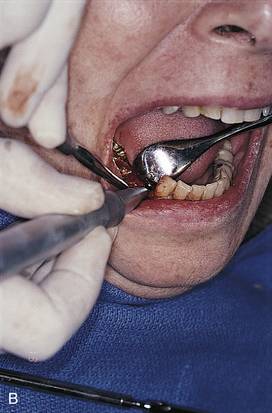CHAPTER 29 Maintenance and Hygiene
PERIOTEST MOBILOMETER (PERIOTEST M)
Medizintechnik’s electronic mobilometer, the Periotest M (Fig. 29-1), is available through Salvin Dental Specialists (Charlotte, North Carolina). This instrument detects the level of mobility of root form implants. Readings from −7 to +18 indicate movement that is too imperceptible to be detected clinically. When mobility readings are +9 or above, implants with even the best of radiographic findings must be evaluated and treated.
Mobility is recorded as for natural teeth on a follow-up record form (see Appendix J). Tissue color and tone are inspected and recorded using the Löe and Silness index. Muhlemann’s index is satisfactory for recording any bleeding.
Stay updated, free dental videos. Join our Telegram channel

VIDEdental - Online dental courses




